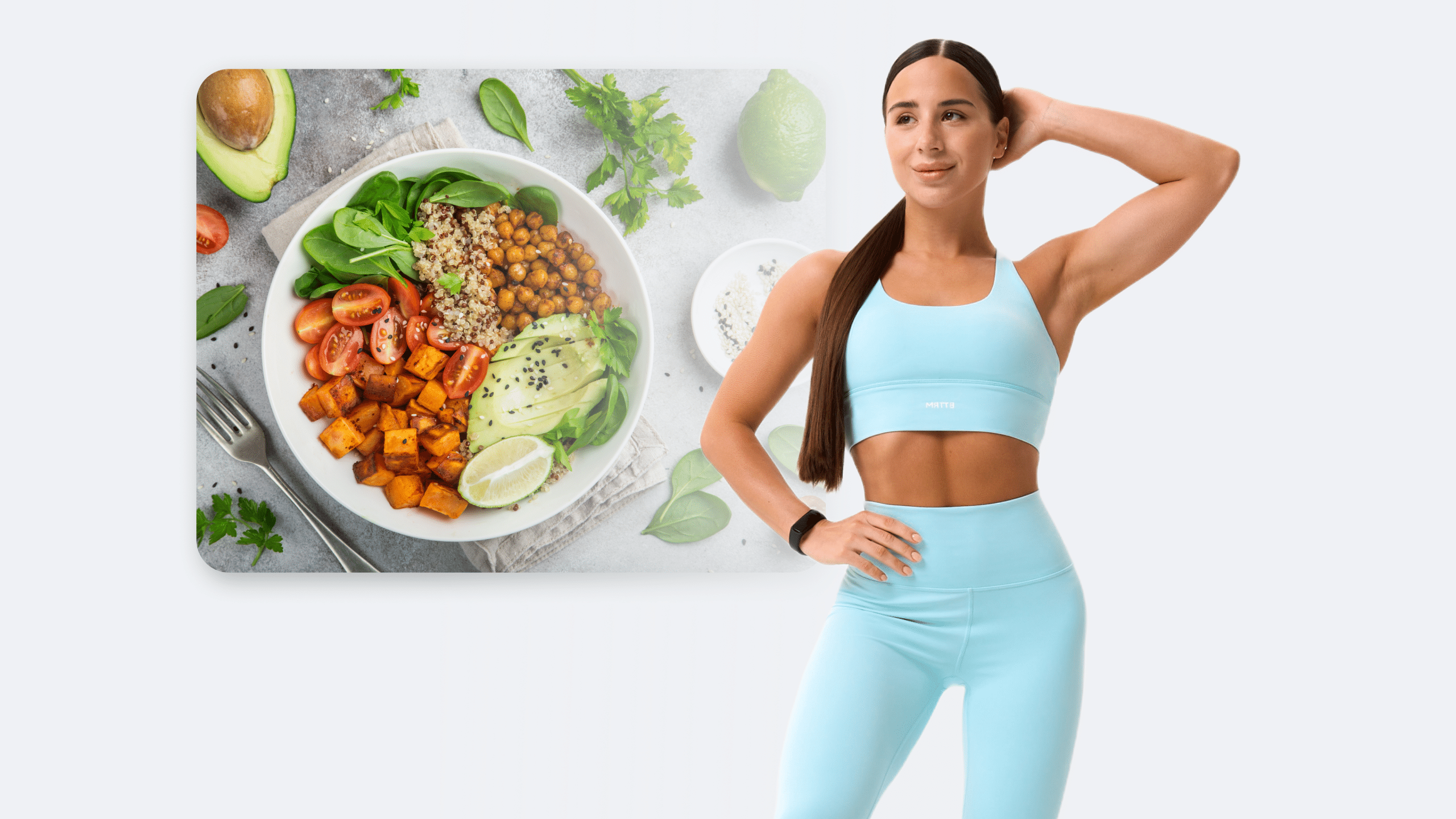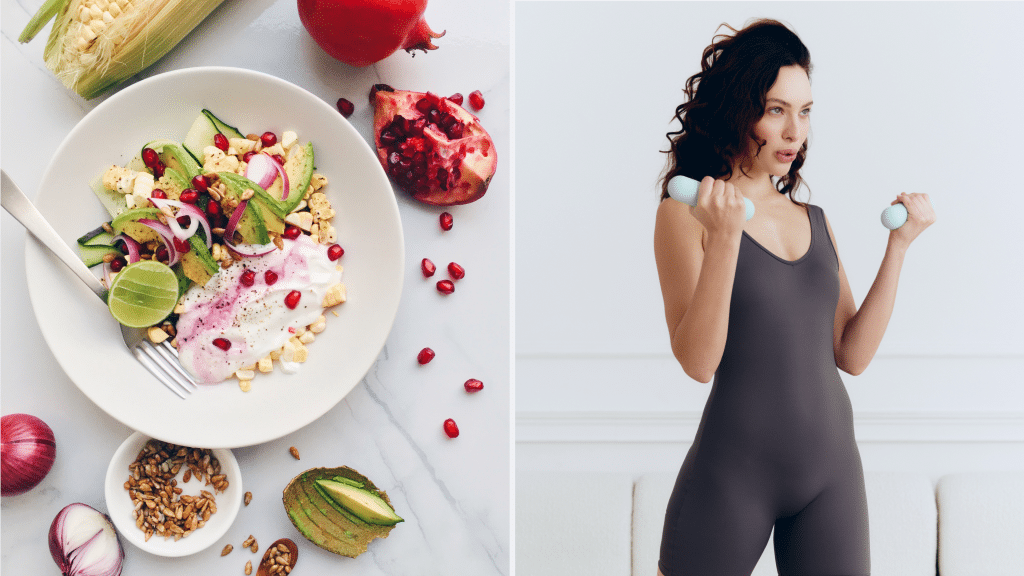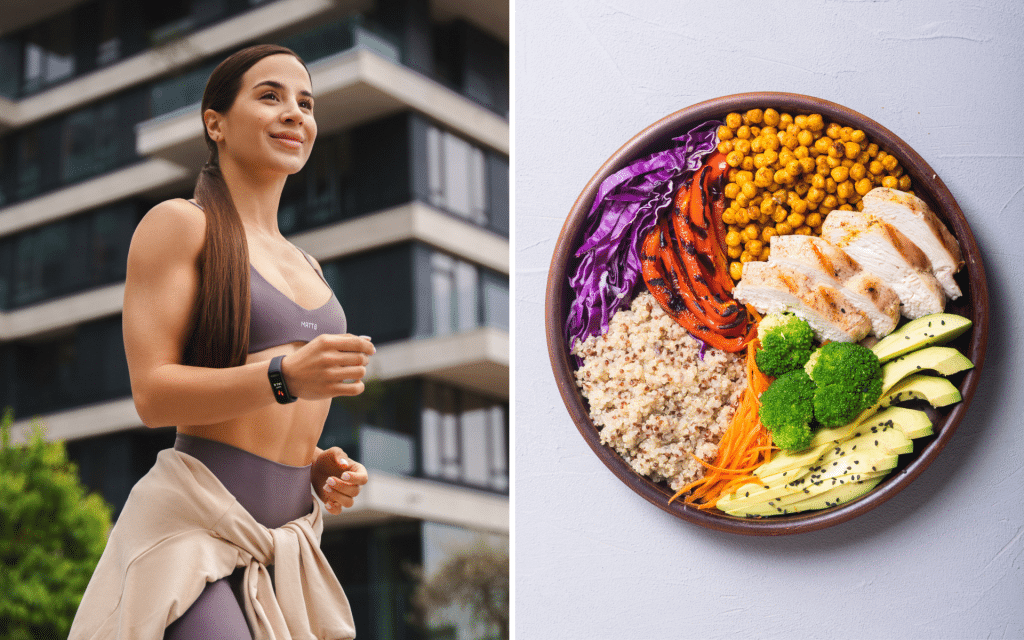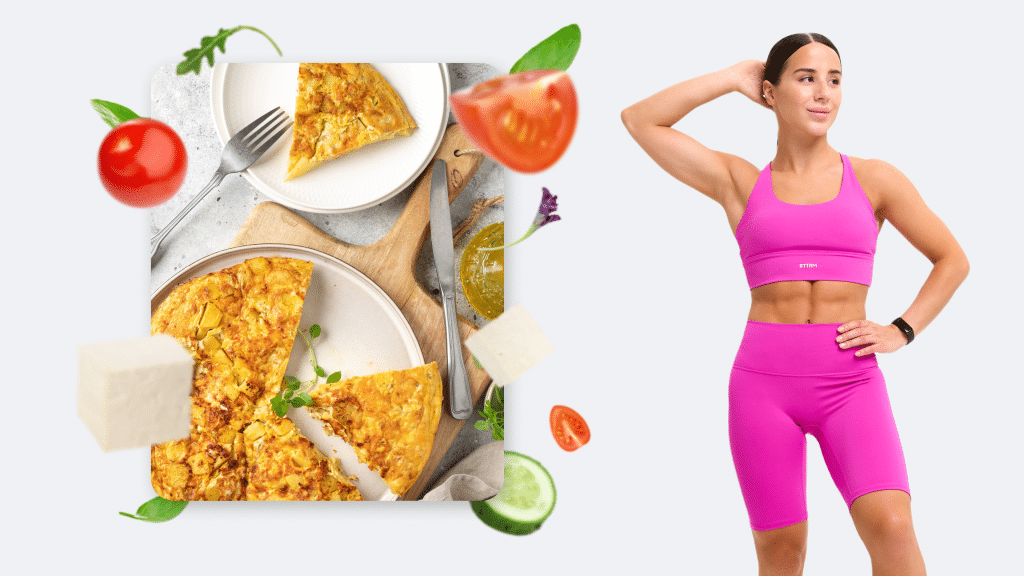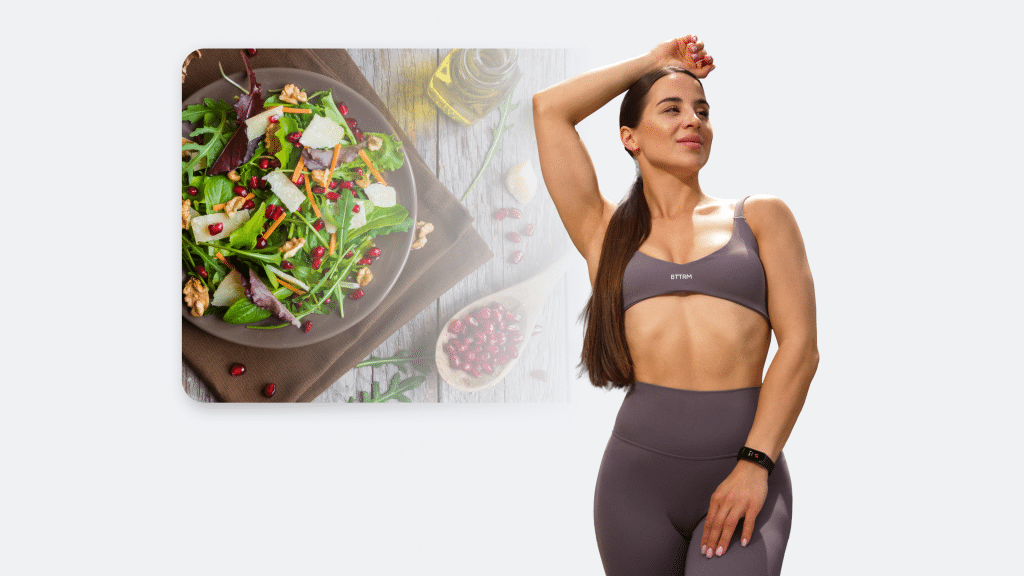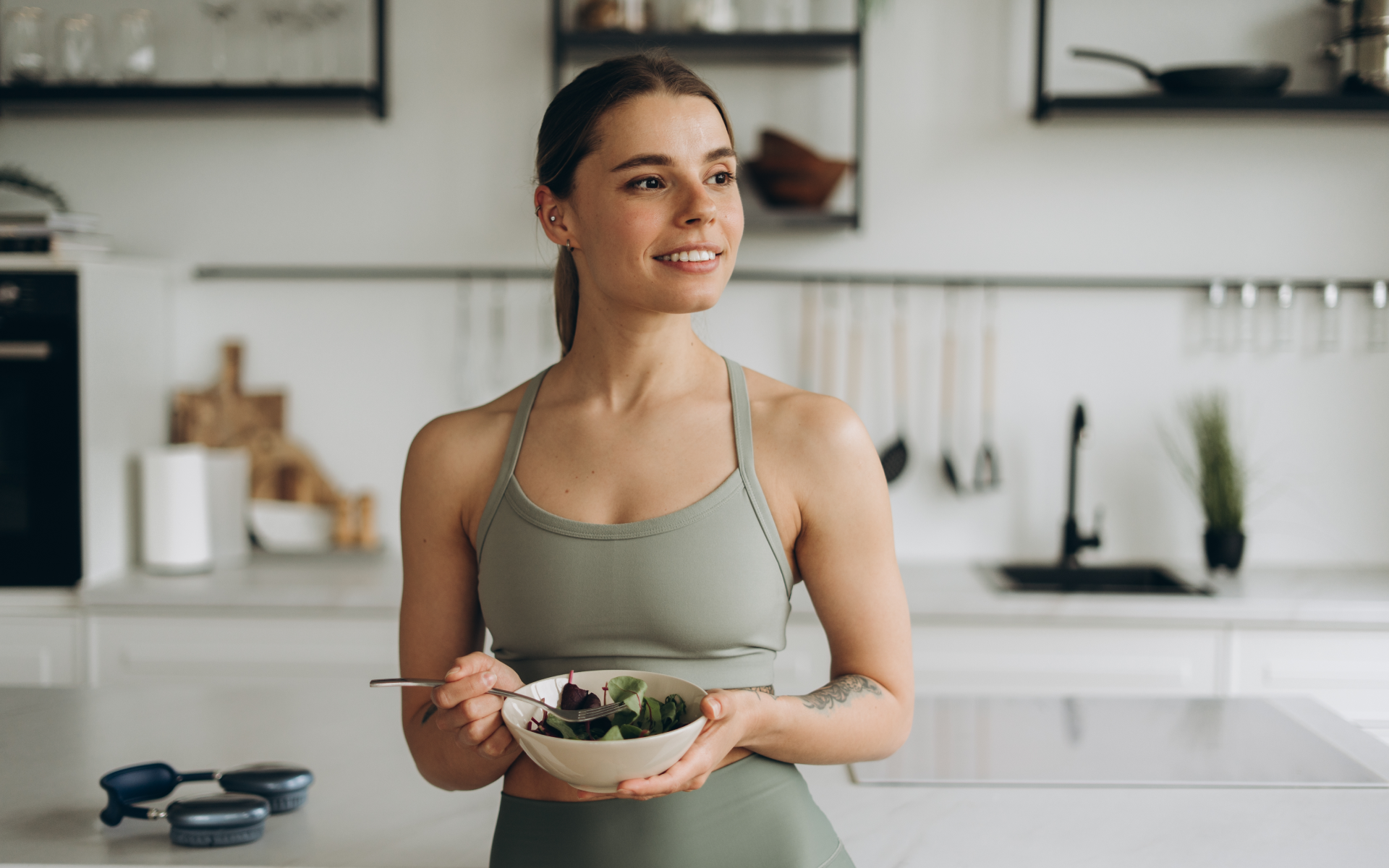A low-carb, high-protein diet aims to reduce carb consumption while energizing your body with proteins. Given how many protein-rich foods are also low-carb, it is easy to enjoy a low-carb, high-protein meal plan when you want to get in shape.
Besides losing weight, this meal plan may also help maintain lean muscle. Preparing these nutrient-dense options isn’t an uphill task. You just need to toss a few ingredients or prepare some recipes beforehand. Set aside a little less than 2 hours to prepare the meals, and when finished, you will have prepared a week of high-protein breakfasts, lunches, and dinners.
The goal of every meal plan is to ensure your body gets the nutrients required to reach your goals. Here, we will discuss the basics of low-carb, high-protein meal plans, followed by tips to create one and what you can achieve with that plan.
What is a Low Carb High Protein Meal Plan?
Different types of low-carb, high-protein diets exist, and dieticians distinguish them according to the carb intake they allow. This eating plan helps practitioners reach their weight goals.
When carbs like bread, pasta, and sugary foods are limited and replaced with protein-rich foods like eggs, fish, and lean meats – they typically reduce calorie intake while providing the body with many essential nutrients required to repair and grow (1).
This plan works by shifting the body’s energy source from carbs to proteins and fats. This transition is said to have various advantages, which we will discuss later in this article.
Easy 5-Day Low-Carb High-Protein Diet Plan
Here is an example of a 5-day low-carb diet plan that also emphasizes proteins:
Day 1:
Breakfast (320 calories, 10g carbohydrates)
- 2 scrambled eggs with sautéed spinach and mushrooms
- 2 turkey sausage links
- ½ avocado
A.M. Snack (100 calories, 6g carbohydrates)
- 1 small handful of almonds
Lunch (350 calories, 12g carbohydrates)
- Grilled chicken salad with mixed greens, cucumber, cherry tomatoes, and olive oil dressing
P.M. Snack (110 calories, 5g carbohydrates)
- Cottage cheese with cucumber slices
Dinner (400 calories, 14g carbohydrates)
- Baked salmon with roasted cauliflower and a side of sautéed kale
Daily Totals: 1,280 calories, 47g carbohydrates, 106g protein
If you wish to free yourself from all the extra pounds that have been weighing you down for way too long, start using the BetterMe: Health Coaching app and overhaul your entire life!
Day 2:
Breakfast (290 calories, 8g carbohydrates)
- Veggie omelet with mushrooms, bell peppers, and cheddar cheese
- 1 slice of turkey bacon
A.M. Snack (100 calories, 7g carbohydrates)
- 1 boiled egg
- 1 small apple
Lunch (360 calories, 10g carbohydrates)
- Grilled shrimp and avocado salad with spinach, tomatoes, and balsamic dressing
P.M. Snack (90 calories, 6g carbohydrates)
- Greek yogurt with a sprinkle of chia seeds
Dinner (430 calories, 18g carbohydrates)
- Grilled chicken thighs with zucchini noodles and pesto sauce
Daily Totals: 1,270 calories, 49g carbohydrates, 105g protein
Read more: High Protein Vegetarian Meal Plan: Foods List and Sample Recipes
Day 3:
Breakfast (310 calories, 9g carbohydrates)
- 3-egg scrambled with smoked salmon, spinach, and avocado
A.M. Snack (130 calories, 6g carbohydrates)
- Handful of walnuts
- 1 small clementine
Lunch (370 calories, 11g carbohydrates)
- Turkey lettuce wraps with cucumber, tomatoes, and avocado
P.M. Snack (120 calories, 5g carbohydrates)
- Cottage cheese with a few cherry tomatoes
Dinner (450 calories, 15g carbohydrates)
- Grilled steak with roasted Brussels sprouts and mashed cauliflower
Daily Totals: 1,380 calories, 46g carbohydrates, 108g protein
Day 4:
Breakfast (300 calories, 9g carbohydrates)
- Veggie egg muffins (eggs, spinach, bell peppers, and cheese)
- 1 slice turkey bacon
A.M. Snack (110 calories, 7g carbohydrates)
- 1 small handful of almonds
- ½ cup blueberries
Lunch (350 calories, 12g carbohydrates)
- Grilled chicken Caesar salad (no croutons) with avocado slices
P.M. Snack (90 calories, 4g carbohydrates)
- String cheese
Dinner (440 calories, 16g carbohydrates)
- Grilled chops with roasted asparagus and cauliflower mash
Daily Totals: 1,290 calories, 48g carbohydrates, 104g protein
Day 5:
Breakfast (310 calories, 10g carbohydrates)
- 2 scrambled eggs with sautéed mushrooms and spinach
- ½ avocado
- 1 slice of turkey bacon
A.M. Snack (100 calories, 5g carbohydrates)
- Cottage cheese with a few slices of cucumber
Lunch (360 calories, 11g carbohydrates)
- Tuna salad (tuna, olive oil, mixed greens, cucumbers) wrapped in lettuce leaves
P.M. Snack (120 calories, 4g carbohydrates)
- 1 boiled egg
- 1 small handful of almonds
Dinner (450 calories, 17g carbohydrates)
- Baked salmon with steamed broccoli and a side of mashed cauliflower
Daily Totals: 1,340 calories, 47g carbohydrates, 106g protein
We designed this meal plan to provide a variety so you don’t get bored while following it.
However, feel free to swap the recipes and adjust portion sizes according to your food and lifestyle preferences. For instance, if you find a breakfast you love, like eggs with bread alternatives – go ahead and eat it every morning to satisfy your taste buds.
Keto Dinner Rolls Recipe
If you love bread but are on a keto diet, here’s a simple recipe for low-carb dinner rolls:
Ingredients:
- 1 ½ cups almond flour
- 2 teaspoons baking powder
- ½ teaspoon salt
- ⅓ cup sour cream
- 4 tablespoons melted butter
- 2 large eggs
Instructions:
- Preheat the oven to 390°F (200°C). Grease a muffin tin.
- Mix the almond flour, baking powder, and salt in a large bowl.
- Add the sour cream, melted butter, and eggs to the dry ingredients. Mix until a thick batter forms.
- Spoon the batter evenly into the muffin tin.
- Bake for 12-15 minutes until the rolls spring back when touched.
- Let them cool in the pan for 10 minutes before transferring to a wire rack to cool completely (2).
(139 calories, 6g carbohydrates, 3g net carbs)
A Tip for More Protein:
Add a scoop of unflavored whey protein powder to the batter to increase the protein content.
Can You Lose Weight on High-Protein Low Carb Diet?
A high-protein and low-carb diet is one of the strategies often adopted to shed the extra pounds. These diet plans change the body’s macronutrient balance, reducing calorie intake, which can trigger physiological changes like weight loss.
In a 2020 review published in the Journal of Obesity & Metabolic Syndrome, researchers analyzed studies lasting six to 12 months where researchers compared high-protein diets to other diets (3).
They found that high-protein diets promote weight loss by:
- Increasing satiety (feelings of fullness)
- Boosting energy expenditure
- Preserving muscle mass
Here are some factors that build up and lead to weight loss:
Increased Protein Intake
These diets may help maintain and build lean muscle mass with an increased protein intake. A protein-rich diet can help you feel more satiated, reducing your appetite and calorie consumption (4). Research has found that meals with 25–81% of their calories from protein help increase feelings of fullness (5). This fact means that even diets with moderate protein can help reduce hunger.
Also, the body has to expend more energy to digest protein than when digesting fats and carbs. This extended digestion process is also called the thermic effect of food (TEF), which slightly increases energy expenditure (6).
Less Carb Consumption
Reducing carb consumption leads to a reduction in energy intake. Many people who restrict carbohydrates don’t necessarily make up those calories elsewhere, so they eat fewer calories overall, creating an energy deficit necessary for weight loss.
May Induce Ketosis
If you have been researching low-carbohydrate diets, you have probably seen the term “ketosis.” Ketosis is a state your body enters when you drastically cut down on carbs. Your body starts to look for other sources of energy, one of which is fat.
If you’re also in an energy deficit, your body can use the ketones from stored fat for energy, which can help with weight loss (7). However, the body can also turn protein into glucose, which it prefers as an energy source. For this reason, diets that aim to induce ketosis are moderate, not high, in protein.
Due to decreased energy intake and increased satisfaction, some people have found low-carb, high-protein diets helpful for weight loss.
What Happens When You Consume a High-Protein and Low-Carb Diet?
The low-carb, high-protein diet has become famous for those who want to lose weight or improve their body composition. Apart from some of the perks discussed above, it is essential to note that this diet may negatively impact your energy levels and athletic performance.
Additionally, some people may need some help with implementing this approach.
The primary adverse side effect is the “keto flu.” It is a frequently observed response of the human body as it transitions from carbohydrates to fat metabolism (8). It is characterized by symptoms like:
- Headaches
- Fatigue
- Irritability
Apart from these, digestive changes are also commonly experienced by people who have just started eating high-protein, low-carb meals. Reducing carb intake can make it more challenging to get enough fiber, which can affect your digestive system.
Whether you’re a workout beast or just a beginner making your first foray into the world of fitness and dieting – BetterMe has a lot to offer to both newbies and experts! Install the app and experience the versatility first-hand!
How Many Carbs a Day to Lose Weight?
There is no specific amount of carbs a person should eat to lose weight. Eating in a consistent calorie deficit while maintaining high activity levels is preferred for sustainable weight loss. Some people reduce their calorie intake by restricting carbohydrates, but many other ways exist. Even if you’re not restricting carbohydrates, try replacing some of your added sugar and refined carbohydrate-rich foods with more complex carb-rich foods, such as:
- Legumes
- Vegetables
- Fruits
- Whole grains
You may not see viable results if you only cut carbs without focusing on the rest of your diet. The 2020–2025 Dietary Guidelines for Americans suggest that an adult should divide their daily calorie intake as follows (9):
- 45–65% from carbohydrates
- 10–35% from protein
- 20–35% from fat
The Food and Drug Administration advises consuming about 275 grams of carbohydrates per day based on a standard 2,000-calorie diet (10).
The specific requirements of an individual may vary according to their age, weight, height, and activity levels. A diet that works for you won’t necessarily bring desired results for your friend. Talk to a registered dietitian who can teach you how to create a well-structured meal plan.
Read more: Low-Carb Diet Food List: Stay Healthy While Eating Fewer Carbs
What Meals Are High in Protein and Low in Carbs?
You want easy high protein meals that are also low carb.
Like any healthy meal plan, a low-carb and high-protein meal plan also focuses on nutrient-rich foods. Your entire focus should be on increasing the protein and reducing the number of carbs.
Some high protein low carb foods that are easy to mix and match include:
- Meats and Poultry: chicken, turkey, lean beef, bison, etc.
- Fish and Shellfish: salmon, shrimp, cod, flounder, clams, etc.
- Eggs: both whole eggs and egg whites
- Dairy: high-protein options like low-fat Greek yogurt and cottage cheese
- High-Protein Vegetarian Foods: tofu, edamame, and other soy-based products
- Non-starchy Vegetables: broccoli, cauliflower, peppers, asparagus, greens, mushrooms, etc.
- Nuts and Seeds: almonds, pumpkin seeds, chia seeds, sunflower seeds, peanut butter, and hemp seeds
- Beverages: water, sparkling water, unsweetened coffee, and herbal tea
- Condiments: spices, fresh herbs, pepper, etc.
Eating starchy veggies, fruits, and high-protein whole grains like quinoa is okay if you keep it moderate. Meanwhile, the fat intake depends on your dietary regimen.
Foods like nuts and seeds, avocados, olive oil, and other vegetable oils are healthy fat sources.
You might be wondering if you can share this diet with everyone in your household, especially if you are the main cook in the house.
However, most pediatricians do not recommend low carb meals for family because the diet can cause nutrient deficiencies in children. Unless your child’s pediatrician specifically prescribed a low carb diet for an overweight child, it’s best to keep the diet for yourself (11).
PRO TIP for parents doing high-protein, low-carb: When serving dinner, simply portion yourself a smaller serving of carbs and a larger serving of protein than the rest of the family to avoid cooking 2 different meals.
What Are 5 Foods to Avoid on A Low Carb Diet?
You should make informed decisions when following a low carb diet plan. Five food groups that you should moderate in your high protein low carb meals include:
- Grains and Starches: Bread, pasta, rice, and cereals are carb-heavy, and you should reduce them in this diet.
- Sugary Foods: Items like cookies, cakes, candy, and sugary drinks are high in carbs and added sugar.
- Sweetened Beverages: Sodas, sweetened teas, and fruit juices contain large amounts of added sugars, which are carbs.
- Processed Snacks: Foods like crackers, chips, and pretzels are often high in carbs with little nutritional benefit.
- High-Carb Fruits: Fruits such as bananas, mangoes, and grapes contain more sugar, increasing your carb intake.
These groups include some healthy foods you don’t have to eliminate. Just be mindful of how they fit into your carbohydrate target.
What Happens if I Eat No Carbs for A Month?
Extremely low levels of carbs can cause your body to break down fats into ketones for energy. Your liver starts making ketones, a fuel that kicks in when your brain doesn’t have enough sugar to drive it. The symptoms you may experience due to this include:
- Initial weight loss
- Decreased energy levels
- Nutrient deficiency (malnutrition)
- Difficulty focusing or decreased cognitive performance
The symptoms listed here illustrate that our bodies need carbs to function adequately. Even though some people thrive on low-carb diets, it is not the healthiest and ideal diet for everyone (12) (13).
Many high-protein options include lean meats and poultry, fish and other seafood, eggs, dairy products, beans and other legumes, and soy products like tofu, nuts, and seeds. Try to include these foods in your meals and snacks across the day. Think about incorporating protein powder as a supplement. It is perfect for quick options like preparing a shake for a snack or mixing it into baking recipes, yogurt, or oatmeal! The 50/25/25 guideline suggests that your plate should consist of 50% vegetables, 25% protein, and 25% starchy vegetables or carbohydrates. This ratio is a helpful guideline for creating a balanced diet without measuring or counting anything.Frequently Asked Questions
How to get 75g of protein a day?
What is a 50 25 25 meal plan?
The Bottom Line
There is no one-size-fits-all when it comes to diet plans. Regardless of your goals, you should work with your healthcare provider or a registered dietitian to ensure your diet plan works for you.
Look around for fun recipes so the plan doesn’t get boring. There is also an option to seek online assistance. Many platforms help users find a low-carb, high-protein meal plan that fits their requirements.
DISCLAIMER:
This article is intended for general informational purposes only and does not serve to address individual circumstances. It is not a substitute for professional advice or help and should not be relied on for making any kind of decision-making. Any action taken as a direct or indirect result of the information in this article is entirely at your own risk and is your sole responsibility.
BetterMe, its content staff, and its medical advisors accept no responsibility for inaccuracies, errors, misstatements, inconsistencies, or omissions and specifically disclaim any liability, loss or risk, personal, professional or otherwise, which may be incurred as a consequence, directly or indirectly, of the use and/or application of any content.
You should always seek the advice of your physician or other qualified health provider with any questions you may have regarding a medical condition or your specific situation. Never disregard professional medical advice or delay seeking it because of BetterMe content. If you suspect or think you may have a medical emergency, call your doctor.
SOURCES:
- Defining a Healthy Diet: Evidence for the Role of Contemporary Dietary Patterns in Health and Disease (2020, pmc.ncbi.nlm.nih.gov)
- Keto Dinner Rolls (2019, resolutioneats.com)
- Clinical Evidence and Mechanisms of High-Protein Diet-Induced Weight Loss (2020, pmc.ncbi.nlm.nih.gov)
- Protein, weight management, and satiety (2008, sciencedirect.com)
- A high-protein diet for reducing body fat: mechanisms and possible caveats (2014, pmc.ncbi.nlm.nih.gov)
- The Thermic Effect of Food: A Review (2019, pubmed.ncbi.nlm.nih.gov)
- What Is Ketosis, and Is It Healthy? (2024, verywellhealth.com)
- Effects of differing levels of carbohydrate restriction on mood achievement of nutritional ketosis, and symptoms of carbohydrate withdrawal in healthy adults: A randomized clinical trial (2019, sciencedirect.com
- Dietary Guidelines for Americans, 2020-2025 (2020, dietaryguidelines.gov)
- Interactive Nutrition Facts Label – Total Carbohydrate (2021, accessdata.fda.gov)
- The Safety of Low-Carb Diet for Kids (2022, verywellhealth.com)
- Metabolic Effects of the Very-Low-Carbohydrate Diets: Misunderstood “Villains” of Human Metabolism (2004, pmc.ncbi.nlm.nih.gov)
- The Truth About a High-Protein, Low-Carb Diet (2016, consumerreports.org)
